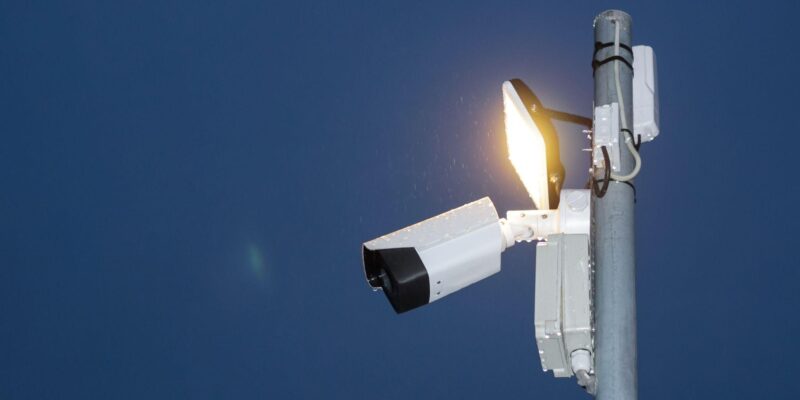In this article, we will explore the distinction between security cameras and surveillance cameras, shedding light on their respective purposes and functionalities.
By objectively analyzing the key differences, we aim to provide readers with a deeper understanding of these sophisticated systems. We will also explore the implications for privacy and security, enabling individuals to make informed decisions when selecting the most suitable camera for their specific needs.
Purpose of Security Cameras
The choice between security vs surveillance cameras often depends on the level of protection you require. The purpose of security cameras is to monitor and deter potential threats to a designated area. These cameras are strategically placed to provide surveillance and enhance the security measures of a location.
The benefits of security cameras are multifaceted. Firstly, they act as a visual deterrent, discouraging criminals from engaging in unlawful activities. The mere presence of security cameras can significantly reduce the risk of theft, vandalism, and other criminal acts.
Security cameras provide valuable evidence in the event of a crime. The footage captured can be used to identify suspects, aid in investigations, and support legal proceedings. The effectiveness of security cameras lies in their ability to provide real-time monitoring. With advancements in technology, security cameras can now be accessed remotely, allowing for immediate response to any potential threats.
Purpose of Surveillance Cameras
Surveillance cameras serve the function of monitoring and observing activities within a designated area. They are commonly used for security purposes, but they can also serve other purposes.
One of the main benefits of surveillance cameras is the deterrence factor. The presence of cameras can discourage potential criminals from engaging in illegal activities, as they know they are being watched.
Surveillance cameras can provide valuable evidence in the event of a crime or incident, aiding in investigations and potentially leading to the identification and apprehension of suspects.
However, it is important to consider legal considerations when implementing surveillance cameras. Privacy laws and regulations must be followed to ensure that individuals’ rights are protected. It is crucial to strike a balance between security and privacy to ensure the effective and lawful use of surveillance cameras.
Key Differences in Functionality
When comparing security cameras to surveillance cameras, it is important to understand the key differences in their functionality. Security cameras are primarily designed to monitor and protect a specific area or property by capturing video footage. They are commonly used for crime prevention and deterrence. The pros of security cameras include their ability to provide evidence in the event of a crime, deter criminal activity, and enhance overall safety and security. However, they may be limited in terms of coverage and may not provide real-time monitoring capabilities.
On the other hand, surveillance cameras are designed to monitor and record activities in various locations. There are different types of surveillance cameras available, including dome cameras, bullet cameras, and PTZ (pan-tilt-zoom) cameras. Each type offers different features and benefits, depending on the specific surveillance needs. Surveillance cameras have the advantage of providing wide coverage, real-time monitoring, and the ability to record and store footage for later analysis. However, they may require more complex installation and maintenance compared to security cameras.
Implications for Privacy and Security
Considering the implications for privacy and security, it is important to analyze the impact of security and surveillance cameras on individuals and their surroundings.
Privacy concerns arise due to the potential invasion of personal space and the collection of sensitive information. While security cameras aim to deter criminal activities and enhance public safety, there is a fine line between surveillance for protection and an infringement on privacy rights.
Legal implications also come into play, as the use of surveillance cameras must comply with applicable laws and regulations. These laws dictate the permissible locations for cameras, the retention and disposal of captured footage, and the protection of individuals’ privacy rights.
Striking a balance between security and privacy is crucial to ensuring the effective use of surveillance cameras while respecting individuals’ rights and maintaining public trust.
Choosing the Right Camera for Your Needs
To ensure optimal functionality and meet specific requirements, selecting the appropriate camera for your needs is essential to balancing security and privacy concerns.
When considering camera options, there are several factors to consider. First, determine the purpose of the camera. Are you looking to monitor a large area or focus on specific points of interest? Next, evaluate the lighting conditions in the area where the camera will be installed. Will the camera need low-light or night vision capabilities?
Consider the resolution and image quality required for your surveillance needs. Higher resolution cameras provide clearer and more detailed images, but they also require more storage space. You should also think about the camera’s connectivity options and whether it is compatible with your existing security system.










Comments